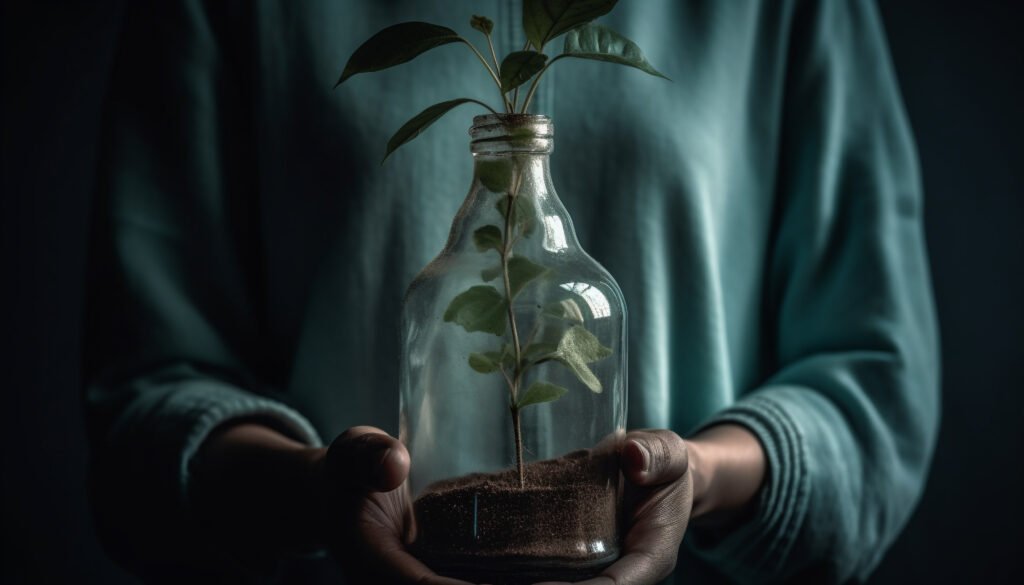Eunice Foote: A Scientist Written Out of History
Harshitha Chaganti
March 2025
Charles Darwin, Albert Einstein, Isaac Newton, Galileo Galilei, and Marie Curie are the names that often come to mind when we think of great scientists, yet only one of them is a woman. Throughout history, countless women have made groundbreaking scientific discoveries, only to have their contributions overlooked or credited to men. One such scientist is Eunice Newton Foote, a pioneering researcher whose work on the greenhouse effect predated some of the most well-known climate science, yet for years her name remained in the shadows of history.

Eunice Newton Foote was born on July 17, 1819 in Goshen, Connecticut. She pursued her education at the Troy Female Seminary (now Emma Willard School), an institution famous for its progressive approach to women’s education during the era. There, she developed an interest in scientific subjects, laying the groundwork for her future experiments.
In 1856, Foote conducted experiments to understand the warming effect of various different atmospheric gases. Using household items, glass cylinders, thermometers, and an air pump, she measured how gases carbon dioxide (then known as “carbonic acid gas”) and water vapor absorbed heat when exposed to sunlight. Her findings were groundbreaking:
- Carbon Dioxide’s Heat Absorption: Foote observed that carbon dioxide absorbed more heat and retained it longer than other gases, leading her to conclude that an atmosphere rich in this gas would elevate Earth’s temperature.
- Implications for Climate: She hypothesized that variations in atmospheric carbon dioxide levels could have contributed to historical climate changes, suggesting that higher concentrations would result in a warmer planet.
Foote’s work predated the more widely recognized experiments of John Tyndall by three years, yet her contributions remained largely unrecognized during her lifetime. Had her research received the attention it deserved, discussions about climate change might have begun much earlier, potentially influencing policies and scientific advancements that could have helped mitigate global warming before it became a crisis.
Despite the significance of her research, Foote faced societal barriers typical of the 19th century. As a woman, she was not permitted to present her findings at the 1856 meeting of the American Association for the Advancement of Science. Instead, Professor Joseph Henry of the Smithsonian Institution presented her paper, acknowledging the limitations placed on women in science at the time.
Foote’s work was subsequently overshadowed, and her name faded into obscurity. It wasn’t until recent decades that historians and scientists revisited her experiments, recognizing her as a pioneer in climate science. In 2019, on the 200th anniversary of her birth, NOAA celebrated her contributions, shedding light on her role in early climate studies.
Eunice Newton Foote’s story is a testament to the challenges women in science have historically faced and the importance of acknowledging their contributions. Her experiments laid the foundation for our understanding of the greenhouse effect and climate change. Today, as we grapple with global warming, Foote’s early insights serve as a reminder of the critical need for diverse voices in scientific discourse.
By bringing Eunice Foote’s legacy to the forefront, we not only honor her achievements but also inspire future generations of women scientists to pursue their passions, undeterred by the biases of their time.
References
[1] First Paper to link CO2 and global warming, by Eunice Foote (1856). The Public Domain Review. (n.d.). https://publicdomainreview.org/collection/first-paper-to-link-co2-and-global-warming-by-eunice-foote-1856/
[2] Huddleston, A. (2019, July 17). Happy 200th birthday to Eunice Foote, Hidden Climate Science Pioneer. NOAA Climate.gov. https://www.climate.gov/news-features/features/happy-200th-birthday-eunice-foote-hidden-climate-science-pioneer
[3] Kurland, Z., Hafner, K., & Feder, E. (2024, February 20). The woman who demonstrated the greenhouse effect. Scientific American. https://www.scientificamerican.com/article/the-woman-who-demonstrated-the-greenhouse-effect



